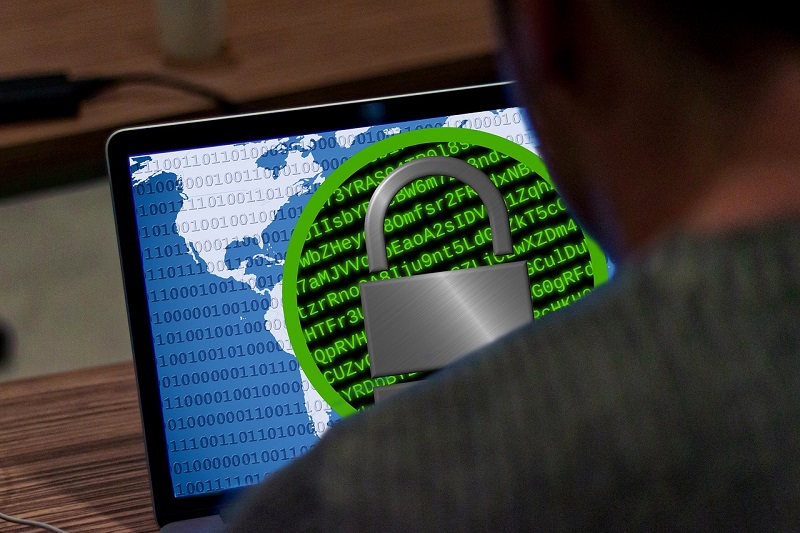Malware 101: What is Malware, How to Prevent Attacks, and How to Remove Malware from Your Computer
July 07, 2022 • César Daniel Barreto

Malware is a term used to describe all sorts of malicious software that can infect your computer and cause all kinds of damage. We will discuss what malware is, how to prevent malware attacks, and how to remove malware from your computer. We will also provide tips on staying safe online and protecting your computer from these harmful programs.
What is Malware?
A computer infected with malware is known as a malware infection.
A malware infection is a program or code that attacks, explores, steals, or does any other task an attacker might desire. Because of the variety of shapes in which malware exists, it allows for many options to infect computers.
- Allow an attacker to utilize a compromised machine as a remote control platform.
- Send spam from the infected computer to network members unaware of the infection.
- Examine the user’s local network for critical data.
Types of Malware
Adware
Adware is malware that loads advertisements on your computer without your permission. While it isn’t particularly harmful, it may be distracting because “spammy” advertising constantly pops up while you work, slowing down your PC’s performance considerably. Furthermore, these commercials might unintentionally encourage users to download additional hazardous types of malware.
To protect your computer from adware:
- Constantly update your operating system and software regularly to avoid adware infections.
- Install a reputable anti-malware program and run regular scans.
- Be cautious when downloading free programs, as they may come bundled with adware.
- Never click on pop-up advertisements.
Viruses
A virus is a malware that can replicate itself and spread to other computers. It can also delete files, change settings, or corrupt data on your computer. In some cases, a virus might even display fake warnings or advertisements to trick you into installing more malware.
Viruses are often spread through email attachments or by downloading infected files from the internet.
To protect your computer from viruses:
- Never download files from untrustworthy websites.
- Avoid email attachments from unknown senders.
- Install a reputable antivirus program and run regular scans.
- Update your operating system and software regularly.
- Be cautious when downloading free programs, as they may come bundled with viruses.
Fileless Malware
Fileless malware is a type of malware that doesn’t rely on files to infect your computer. Instead, it uses legitimate programs installed on your computer to do its dirty work. Because fileless malware doesn’t use any files, it can be tough to detect and remove.
Fileless malware can be complex for antivirus software to protect against because it doesn’t have an executable file. But you can help protect your computer by ensuring users only have the rights they need to do their jobs. This will stop cybercriminals from using fileless malware to get employee credentials and access restricted data.
Worms
Worms are malware that can spread themselves without any user interaction. Worms can cause a lot of damage because they can quickly spread across an entire network, infecting all of the computers on that network. Once a worm infects one computer, it will scan the network for other vulnerable computers and distribute them to those systems.
Worms are often spread through email attachments or by downloading infected files from the internet.
To protect your computer from worms, avoid email attachments from unknown senders.
- Never download files from untrustworthy websites.
- Install a reputable antivirus program and run regular scans.
- Update your operating system and software regularly.
- Be cautious when downloading free programs, as they may come bundled with worms.
https://www.youtube.com/watch?v=QozdEbyMK5E
Trojans
Trojan programs are fake programs that pretend to be something else. They aren’t viruses or worms, but they can still do a lot of damage. Trojan programs usually get into your computer through email or links that lead to a fake website. Since they rely on social engineering to get users to spread and download them, they can be more challenging to fight against than regular viruses and worms.
The easiest way to protect your computer from trojan programs is to be cautious about the emails you open and the websites you visit.
- Install a reputable antivirus program and run regular scans.
- Update your operating system and software regularly.
- Be cautious when downloading free programs, as they may come bundled with trojans.
Ransomware
Ransomware is malware that encrypts your files and holds them hostage until you pay a ransom. Paying the ransom may not guarantee that you’ll get your files back, and it also supports the cybercriminals who create ransomware.
Once your files are encrypted, you won’t be able to access or use them. Ransomware is usually spread through email attachments or by downloading infected files from the internet.
Ransomware is often spread through email attachments or by downloading infected files from the internet.
To protect your computer from ransomware, avoid email attachments from unknown senders.
- Never download files from untrustworthy websites.
- Install a reputable antivirus program and run regular scans. Update your operating system and software regularly.
- Be cautious when downloading free programs, as they may come bundled with ransomware.
Bots
A bot is a software program that runs automated tasks over the internet. Developers can use bots for good or bad purposes. For example, a weather bot could automatically send you a tweet when it’s going to rain in your area. But Hackers can also use a bot to spread spam or malware.
A botnet-distributed denial of service attack in 2018 took down Twitter, Netflix, and other popular websites.
The best way to protect your computer from bots:
- Install a reputable antivirus program and run regular scans.
- Update your operating system and software regularly.
- Add CAPTCHAs to forms on your website to make it more difficult for bots to submit them.
Spyware
Spyware is malware that allows cybercriminals to collect information about you without your knowledge. They can track the websites you visit, the searches you make, and the files you download. Spyware can also collect sensitive information like your passwords and credit card numbers.
Spyware is usually installed on your computer without your knowledge, through email attachments or by downloading infected files from the internet.
To protect your computer from spyware:
- Avoid email attachments from unknown senders.
- Never download files from untrustworthy websites.
- Install a reputable antivirus program and run regular scans. Update your operating system and software regularly.
- Be cautious when downloading free programs, as they may come bundled with spyware.
Rootkits
Rootkits are malware that allows cybercriminals to access your computer and its sensitive information without your knowledge. Rootkits are usually installed on your computer without your knowledge, through email attachments, or by downloading infected files from the internet. Cybercriminals can use them to collect information about you, track the websites you visit, and even control your computer remotely.
To protect your computer from rootkits:
- Avoid email attachments from unknown senders.
- Never download files from untrustworthy websites.
- Install a reputable antivirus program and run regular scans. Update your operating system and software regularly.
Be cautious when downloading free programs, as they may come bundled with rootkits.
Types of Malware Attack Methods
There are different ways that malware can spread to other computer systems. Malware attack definitions can include the following:
- Peer-to-peer (P2P): Sharing files can sometimes put your computer at risk. For example, when you share music or pictures, they might not seem harmful. But, some files may contain malware. Once you open these files, the malware can infect your computer.
- Drive-by download: Malware can be installed on your computer without your knowledge just by visiting an infected website. The malicious code can exploit vulnerabilities in your web browser or plugins to install the malware on your computer.
- Email attachments: Hackers can spread malware through email attachments. These are files that are attached to an email message. The sender may seem legitimate, but the attachment might be infected. When you open the file, the malware can infect your computer.
How to Prevent Malware
There are many ways to prevent malware, including firewalls, antivirus software, and email filtering.
- Firewalls: A firewall is a system that helps protect your computer from unauthorized access. It can be hardware or software. A hardware firewall is a physical device between your computer and the internet. A software firewall is a program that runs on your computer.
- Antivirus software: Antivirus software is a program that helps protect your computer from viruses and other malware. It can scan your computer for malware and remove it.
- Email filtering: Email filtering is a process of identifying and blocking email messages that are spam or contain malware.
How to Remove Malware
If you think cybercriminals have infected your computer with malware, there are a few steps you can take to remove it.
Download antivirus software: There are two broad sorts of antivirus software. Real-time malware scanners discover viruses as you work, while on-demand scanners like Microsoft Defender must be activated manually whenever needed.
Scan for malware: Once you have installed antivirus software, run a full scan of your computer to find and remove any malware that may be present.
Update your operating system and software: Malware can take advantage of vulnerabilities in your system or software. By keeping them up-to-date, you can help close these vulnerabilities and make it harder for malware to infect your computer.
Restore from a backup: If you have a recent backup of your computer, you can restore it to an earlier state to remove any malware that may be present.
Malware is a severe threat to your computer and its security. By preventing malware infections and knowing how to remove malware, you can help protect your computer from these malicious programs.

César Daniel Barreto
César Daniel Barreto is an esteemed cybersecurity writer and expert, known for his in-depth knowledge and ability to simplify complex cyber security topics. With extensive experience in network security and data protection, he regularly contributes insightful articles and analysis on the latest cybersecurity trends, educating both professionals and the public.